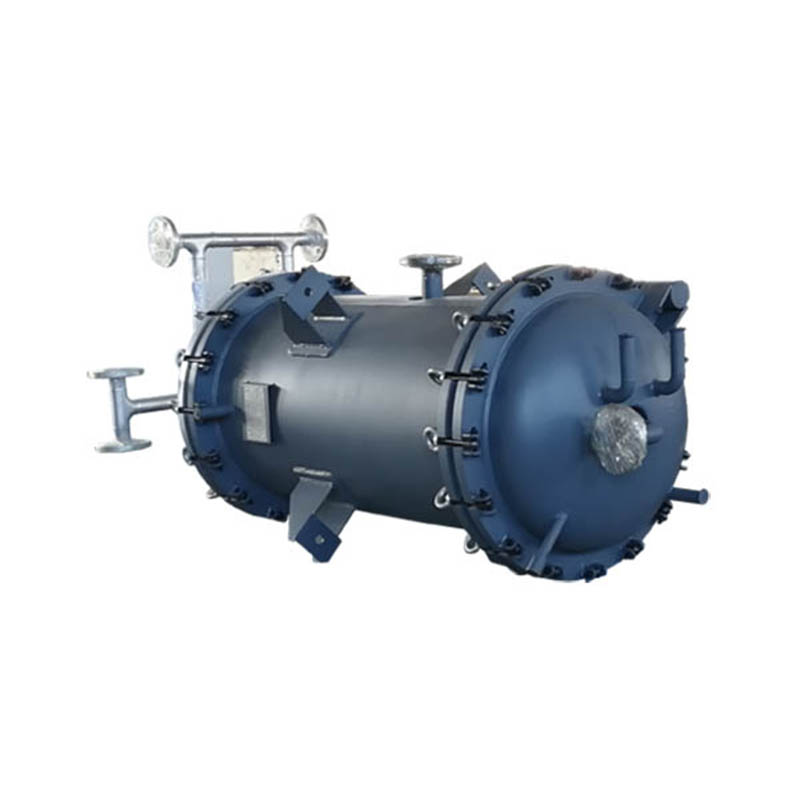Analysis of the Application Fields and Core Technologies of Steam Heat Exchangers
Release time:2025-08-21
Visits:40
As a core device for industrial thermal energy conversion, the steam heat exchanger achieves heating or cooling functions through efficient transfer of steam heat. Its modular design, stability, and wide applicability make it the preferred choice in industries such as chemical engineering, power, and food. The following is an analysis from the aspects of application scenarios, technical advantages, and key points for selection.
I. Application Scenarios in Multiple Industries
1. Energy and Power Industry
In thermal power plants, steam heat exchangers extract high - temperature thermal energy from boilers and convert it into high - pressure steam to drive steam turbines for power generation. At the same time, they recover waste heat for district heating, significantly improving energy utilization efficiency.
2. Chemical and Petroleum Processing
Processes such as cracking and desulfurization require precise temperature control. Steam heat exchangers indirectly heat and separate reaction media to ensure the stability of chemical reactions. In petroleum refining, they are used in the purification process of fractionating towers to improve the quality of refined oil.
3. Food and Pharmaceutical Manufacturing
An indirect heat exchange system made of 316L stainless steel is used to achieve pollution - free heating in processes such as fruit juice sterilization and canned food packaging, ensuring food safety. In pharmaceutical production, it is used for drying and sterilizing raw materials, meeting GMP cleanliness standards.
4. HVAC Systems
Large - scale buildings use steam heat exchangers to transfer thermal energy to air or water for central air - conditioning heating and domestic hot water supply. The counter - flow design can increase the heat exchange efficiency by 30% and reduce heating energy consumption.
5. Textile and Paper Industries
Processes such as cooling of lye in viscose fiber production and drying of wet pulp rely on steam heat exchange technology. Rapid adjustment of process temperature can improve the fabric setting efficiency and the uniformity of paper drying.
6. Emerging Environmental Protection Field
Integrated into seawater desalination equipment, it uses steam waste heat to pre - heat seawater and reduce energy consumption; geothermal power plants improve thermal energy conversion rate through secondary heat exchange, contributing to the development of clean energy.
II. Core Technical Advantages
1. Dual - mode Heat Transfer Mechanism
- Indirect heat transfer: The medium is separated by metal walls such as copper or titanium tubes to avoid cross - contamination, which is suitable for scenarios with high hygiene requirements such as pharmaceuticals and food.
- Direct mixing heat transfer: Steam exchanges heat with cold fluid upon contact, increasing the efficiency by 15% - 20%, and is commonly used in systems such as textile drying and air - conditioning humidification.
2. Enhanced Heat Transfer Structure Design
- The shell - and - tube layout combined with helical baffles creates a turbulent flow effect, breaking the thermal boundary layer. The heat transfer coefficient can reach up to 5000 W/(m²·K).
- The modular tube bundle supports rapid disassembly and cleaning, reducing maintenance costs, especially suitable for processing media prone to scaling such as syrup and petroleum.
3. Intelligent Control System
Equipped with a pressure compensation valve and a temperature sensor, it can adjust the steam flow in real - time with an accuracy of ±1℃, ensuring process stability in scenarios such as chemical reactions and temperature control of lithium - battery electrolyte.
III. Key Parameters for Selection
1. Medium Compatibility: For corrosive fluids, Hastelloy or graphite materials should be selected. For viscous media, a wide - channel plate heat exchanger is recommended.
2. Energy Efficiency Ratio Optimization: Calculate the Reynolds number (Re) and the Prandtl number (Pr), and verify the number of heat transfer units through the NTU method to ensure that the heat load matches the equipment capacity.
3. Operation and Maintenance Economy: Consider the scale cleaning cycle, and give priority to the shell - and - tube design with a self - cleaning function, which can reduce energy consumption by 20% in long - term use.
The continuous technological innovation of
steam heat exchangers is promoting the industrial energy - saving process. From high - pressure steam recovery to low - temperature waste heat utilization, it provides key technical support for the carbon - neutral goal. When selecting equipment, enterprises need to combine process characteristics and choose high - efficiency equipment certified by ASME or PED to ensure both production safety and economic benefits.

